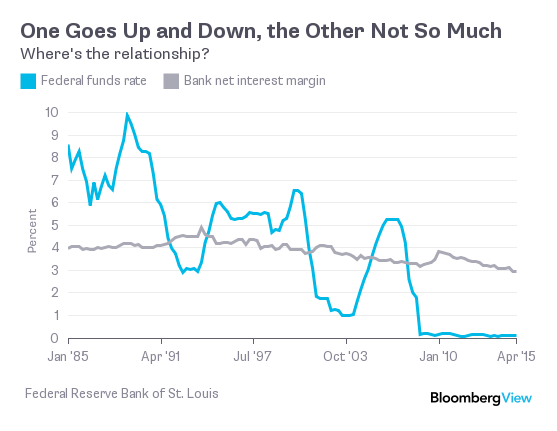Security Market Line SML in Security Analysis and Investment Management Tutorial 07 May 2023 Learn Security Market Line SML in Security Analysis and Investment Management Tutorial 11359
Contents:


The X-axis is the systematic risk, which is beta, Y-axis is the expected return , Rf is the risk-free returns rate, such as the returns rate of government bonds, treasury bills. The graph’s X-axis has systematic risk, which is measured by beta, while the expected returns are on the Y axis. The CAPM returns the asset-appropriate required return or discount rate – i.e. the rate at which future cash flows produced by the asset should be discounted given that asset’s relative risk. Betas exceeding one signify more than average «risk»; betas below one indicate lower than average.
For example, if beta of a security is 2 it means the returns of the security will change 2 times as compared to the returns of the market. If the market return increases by 1% the returns of the security increase by 2% and in the same manner when the market return falls by 1% the returns of the security will fall by 2%. Therefore, higher the beta higher will be the systematic risk. The market risk of security reflects its sensitivity to market movements.
Which one of the following is the vertical intercept of the security market line?
Securities that plot above the CML or the SML are producing returns that are too excessive for the given threat and are underpriced. Securities that plot below CML or the SML are generating returns which might be too low for the given danger and are overpriced. No need to issue cheques by investors while subscribing to IPO. Just write the bank account number and sign in the application form to authorise your bank to make payment in case of allotment. No worries for refund as the money remains in investor’s account.»
- And a security plotted below the SML is overvalued since the investor would be accepting less return for the amount of risk assumed.
- Payment of dividend to the preference shareholders is given priority over the equity shareholder.
- If this expected return does not meet or beat the required return, then the investment should not be undertaken.
- The risk adjustment factor is simply the risk premium required for market return ,multiplied by the riskiness of the individual security.
- It is the tangent line drawn from the point of the risk-free asset to the feasible region for risky assets.
The slope of this line is the security’s beta, and the intercept is its alpha. All efforts have been made to ensure the information provided here is accurate. However, no guarantees are made regarding correctness of data. Please verify with scheme information document before making any investment. This type of risk cannot be eliminated by the diversification hence, it is non- diversifiable.
Security Market Line (SML) Video
Example- Let’s say the beta of Company M is 1 and risk-free return is 4%. We need to calculate the cost of equity using the CAPM model. The CAPM establishes a linear relationship between the required rate of return of a security and its systematic risk i.e. beta.

The sensitivity of a security to market movements is called Beta (β). Beta reflects the slope of a linear regression relationship between the return on the security and the return on the portfolio. Let’s now look at how to calculate the risk of the portfolio. The risk of a portfolio is measured using the standard deviation of the portfolio. However, the standard deviation of the portfolio will not be simply the weighted average of the standard deviation of the two assets.
Then what is the cost of equity for the Company considering CAPM approach. Add all these weighted costs so that weighted average cost of capital is obtained. Different methods are employed to compute the cost of equity share capital. The assets which are below the SML are overvalued as they have lower expected returns for the same amount of risk. It shows the relationship between the expected return of a security and its risk measured by its beta coefficient.
Chapter: Business Science : Security Analysis and Portfolio Management : Portfolio Analysis
Different securities display different sensitivities to market movements. The sensitivity of the security to market movements is called beta (β). It is a useful tool in determining if an asset being considered for a portfolio offers a reasonable expected return for risk.
E.g. If a company issue 8% Non- convertible debentures of ` 100 each, this means the face value is `100 and the interest @ 8% will be calculated on this face value. On the other side, implicit cost is the cost which is actually not a cash outflow but it is an opportunity loss of foregoing a better investment opportunity by choosing an alternative option. The securities are infinitely divisible, which means an investor is free to purchase any fraction of securities.
It compares the relationship between systematic danger and anticipated return. Security market line or SML is a graphical representation of the returns expected to be provided by security given the amount of systematic risk taken in by it. The securities market line is used by investors to determine whether to include security in their portfolio or not. It is a theoretical representation of the expected returns of assets based on systematic, non-diversifiable risk.
Please consider your specific investment requirements before choosing a fund, or designing a portfolio that suits your needs. Rs.CostEquity Capital4,50,00014%Retained Earnings1,50,00013%Preference Share Capital1,00,00010%Debts3,00,0004.5%10,00,000Calculate the new weighted average cost of capital of the firm. The government securities are currently offering interest @ 6% and the Nifty is giving returns @ 14%.
How to Calculate Beta in Excel – Investopedia
How to Calculate Beta in Excel.
Posted: Sat, 25 Mar 2017 18:11:00 GMT [source]
Thus, CAPM and SML help the investor in evaluating risk for a return, in making any investment decision. The principle of the higher the risk, the higher is the return is embodied in this Model. Fairly priced portfolios lie on the SML while undervalued and overvalued portfolio lies above and under the road respectively.
Individual buyers will either hold simply the danger-free asset or some mixture of the danger-free asset and the market portfolio, relying on their threat-aversion. As an investor strikes up the CML, the overall portfolio risk and return increases. Risk averse buyers will select portfolios near the danger-free asset, preferring low variance to greater returns. The tangency point is the optimal portfolio of risky belongings, often known as the market portfolio.
A Deeper Look At Alpha – Investopedia
A Deeper Look At Alpha.
Posted: Sun, 26 Mar 2017 05:29:55 GMT [source]
A beta value of one can indicate a risk level equivalent to the current market average level of risk. However, a beta value greater than one indicates a greater level of risk than the current market average and the value less than one represents a risk level lower than the current market average. Total1,60,00,000The shares of the company sells for Rs. 20.
In consequence, if there is a security market line formula whose Sharpe ratio will be bigger than the market’s then this portfolio has a higher return per unit of risk, which contradicts the efficient market hypothesis. Capital Market Line is a graphical representation of all the portfolios that optimally combine risk and return. Capital Market Line is a theoretical concept that gives optimal combinations of a risk-free asset and the market portfolio. Suppose the risk-free rate of return is 6%, the expected rate of return on the market is 15 percent, the beta of asset A is 0.5 and the beta of asset B is 1.5. And whereas the measure of danger within the CML is the standard deviation of returns , the risk measure in the SML is systematic risk, or beta.
Andrews Limited issued 10,000, 10% preference shares of Rs. 50 each redeemable after 20 years at par and the flotation cost is 5%. Determine the cost of the preference shares if the shares are issued i) At par ii) at 10% premium and iii) at 10% discount. Capital market line explains the portfolio returns, whereas security market line explains the expected returns of individual security. The Capital Market Line draws its basis from the capital market theory and the capital asset pricing model. It is a theoretical representation of different combinations of a risk-free asset and a market portfolio for a given Sharpe Ratio.
CML shows portfolio rates of return, whereas SML represents a market risk as well as given time’s return. A Company has Equity shares of Rs. 10 each which is currently traded at Rs. 30. The weighted average cost of capital can be worked out on the basis of marginal cost of capital than the historical costs. The weighted average cost of new or incremental capital is known as the marginal cost of capital. The marginal cost of capital is derived, when we calculate the weighted average cost of capital using the marginal weights.
Securities which are pretty priced will plot on the CML and the SML. If an asset is plotted below the security market line it is overpriced and vice versa. The reason behind it is that the asset is giving a return lower than the market average due to the cost of buying the asset being too large.

CML stands for Capital Market Line, and SML stands for Security Market Line. The CML is a line that is used to show the rates of return, which depends on risk-free rates of return and levels of risk for a specific portfolio. The intercept point of CML and efficient frontier results in the most efficient portfolio known as the tangency portfolio.
Market Capitalization: What It Is, Formula for Calculating It – Investopedia
Market Capitalization: What It Is, Formula for Calculating It.
Posted: Thu, 07 Apr 2022 07:00:00 GMT [source]
On the basis of asset-pricing implication show by SML , investors prefer to buy all underpriced securities and sell overpriced securities. The logic of the SML or CAPM equation is that the required return on any investment is the risk-free return plus a risk adjustment factor. The risk adjustment factor is simply the risk premium required for market return ,multiplied by the riskiness of the individual security. The security market line depicts the relationship between the expected returns of a particular investment and the risk involved.

